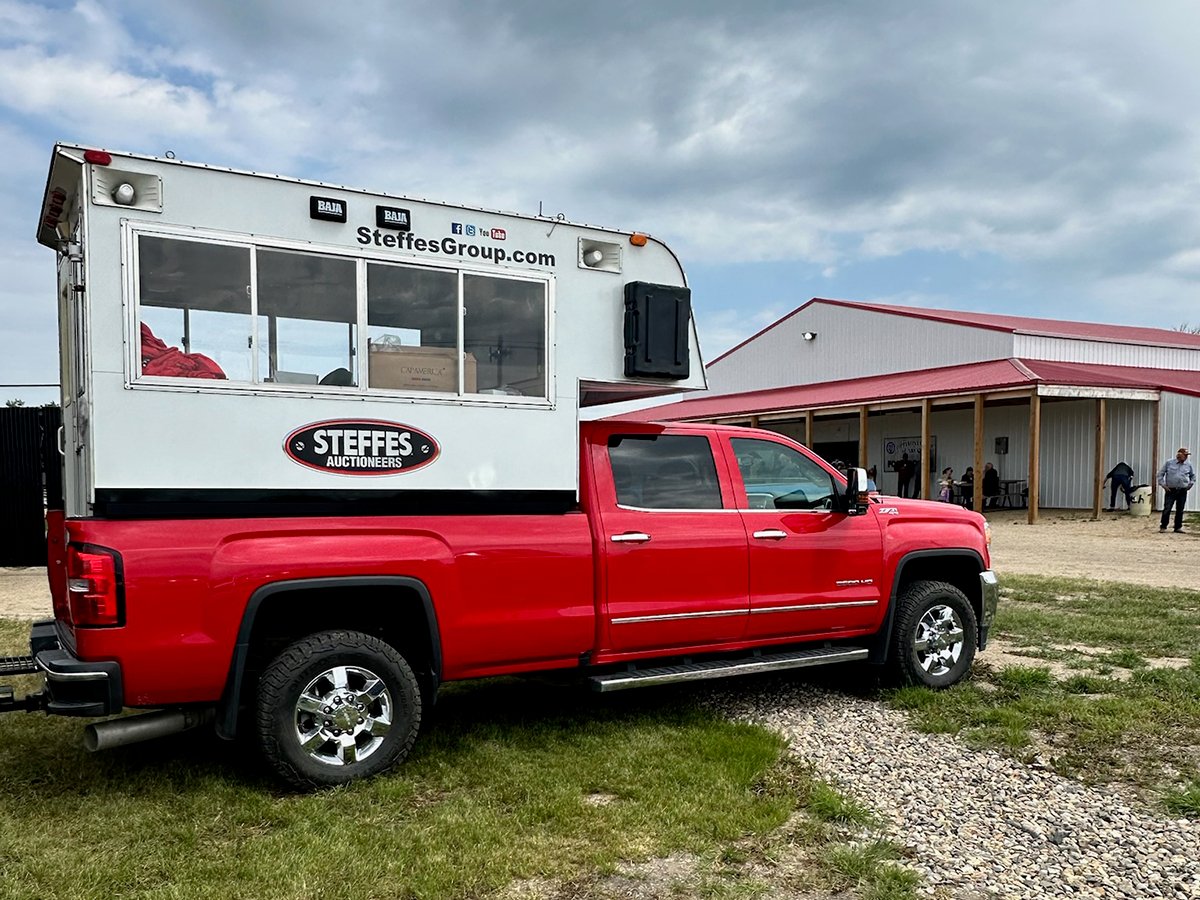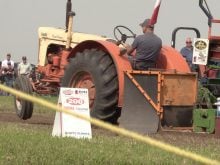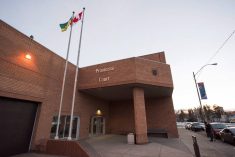HARRIS, Sask. – Every artifact has a story to tell about how and when it was used and the people who once possessed it.
It’s these stories strung together that present a clearer image of a community’s early days.
Harris is just one community that is tackling the huge task of preserving historical pieces to educate future generations.
“Every artifact tells part of the history,” said Betty McFarlane of the Harris and District Museum board.
While completing a history book in 1982, the volunteers discovered they were situated in a unique area. With a growing number of aging materials that needed a home, people in Harris got together to create a community museum.
Read Also

Farm auctions evolve with the times
Times have changed. The number of live, on-farm auctions is seeing a drastic decline in recent years. Today’s younger farmers may actually never experience going to one.
While museums look for intact pieces as visuals for their displays, archeologists piece together broken bits as part of their historical dig into the past.
Eighty kilometres east of the Harris museum, University of Saskatchewan archeology professor Margaret Kennedy was supervising a field school held last month near Floral.
Kennedy has a special interest in the 1930s and the role of farm women. From the shards of twisted metal, broken medicine bottles and chipped china, she hoped to learn more about how purchasing patterns and material goods changed during the decade of hardship on prairie homesteads.
These battered items reveal a picture of life on the Prairies, providing hints of activities in the home and farmyard from rearing chickens to canning.
As times got tougher, she speculated that families started buying more goods in bulk.
“They needed to save every penny,” she said.
Today, larger farm machines, increased cultivation and the clearing of old farmyards makes Kennedy’s search more difficult, she said.
Most people don’t see the value of these odds and sods found in farmyard dumps and outhouses.
“It’s just in the way, it’s old,” is a common attitude about materials that were discarded long ago, she said.
“It’s just too close, so no one thinks it’s important,” said Kennedy, who would like to see the creation of an interpretive centre devoted to homesteading.
Most think these old medicine bottles and china are a dime a dozen, but Kennedy said they are becoming increasingly rare.
She said many farmers have offered their land for archeological digs and are pleased to talk about their family histories, which helps her locate the original building sites.
Pastures are among the best sites because they are undisturbed.
The unearthed materials become possessions of the crown, although Kennedy keeps numerous specimens at the university.
In addition to archeologists, amateur collectors have also contributed to the historical record of Saskatchewan. They include Archie Campbell of Bjorkdale, whose collection was donated to the university, and Henri Liboiron of Ponteix, whose documented items are today found in the Noteku Heritage Museum in Ponteix.
The Harris Museum, which has also received countless donations from local residents over the years, sorts its artifacts into a series of displays documenting unique people, places and things. They range from lakes named for soldiers in the Second World War to early feminist Violet McNaughton, a prairie kitchen and arrowheads and hammer stones.
This year, it will add a nature gallery that will feature an assortment of preserved animals and be backed by a 22 metre hand painted wall mural.
Outside sit a water tower and tank used by steam trains until the 1950s while a large boulder pebbled with ruby stones reminds visitors of the area’s brief foray into prospecting.
The museum directors credit the Museums Association of Saskatchewan with helping them follow correct protocols in the handling of artifacts. Saskatchewan Lotteries provides funding, and volunteers support the centre, said board members McFarlane and Dolores Neil.
“It shows what a town and area can do if anxious to get it done,” McFarlane said of the
museum’s role in preserving the area’s history and providing an educational centre.
Neil said having a museum in town increases awareness of the value of historical artifacts.
“In communities where there is no museum, they don’t give a darn and don’t know what to do with it,” she said.
The Harris museum draws around 1,000 tourists off the highway every summer, so it’s also good for the town, said Neil.
The Harris and District Museum will not hire a full-time summer student due to cuts in funding to the federal program that once supported such work. In the past, the museum received $2,500 annually to employ a student.
Neil said the museum has employed students for a decade but chose not to apply for funding this year after being turned down last year. Museum funds were used to hire a student in 2006 and this year it will hire a worker on a casual basis only. The volunteer board members will take turns with staffing from May to September.
Neil said federal heritage office staff told her to contact her local MP about funding. She instead participated in a letter writing campaign to government calling for the restoration of funding for student jobs.














